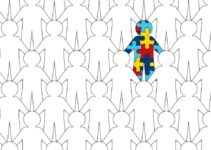Applied Behavior Analysis (ABA) has been determined to be the most effective treatment for individuals with autism. but what is ABA exactly? In this article I will answer the most common questions parents, guardians, families, and community members have asked.
Table of Contents
- What is ABA and how does ABA work?
- What behaviors should we change?
- How do we work on behavior change in therapy?
- What are some pros and cons of ABA therapy?
- Is ABA therapy effective?
- Can ABA therapy be harmful?
- Does ABA therapy supersede Speech Language Therapy or Occupational Therapy?
- How do I know I have the best ABA therapist for my child?
- Is ABA therapy available in public schools?
- Is ABA therapy only used for children with autism?
What is ABA and how does ABA work?
Applied Behavior Analysis is a way to take some of the most challenging or inappropriate behaviors and replace them with behaviors that are viewed as more appropriate.
But it is so much more than that. It is helping the individual become a part of the environment they live in.
One analogy that I continue to use with parents is that imagine a child with autism is much like a person in foreign land learning the nuances of a different culture.
We are helping that individual get their needs and wants met at the most basic of level and teaching them about the foreign culture on a more in depth level.
We want them to keep who they are and their unique characteristics, but also want them to be able to navigate the world around them.
Typically when a child is diagnosed and referred for ABA therapy the next steps are crucial in the development of a plan for the child (also referred to as a treatment plan).
It requires a Functional Behavioral Assessment which is comprised of multiple measures of a child’s current levels including: a direct observation of the child, parent / guardian interview, reviewing medical records or their IEPs, and usually a diagnostic report from the professional that gave them the autism diagnosis.
From all this information a plan is developed to best assist the child by meeting them where they are developmentally. This is where parent input is key to helping develop goals and mapping out what the parents want for their child.
ABA is only really the most successful when done in a truly collaborative manner with parents and families being an integral part of the child’s success.
Blue ABA is an example of an ABA therapy service, available to Oregon residents.
What behaviors should we change?
During intake meetings and interviews with the parents, we discuss behaviors that have impeded the child’s ability to navigate in the community or have caused negative reactions from community members.
It is imperative that the behaviors requiring change are done so in a manner that it is paired with a behavior that replaces it.
For example, if a parent comes to me and says that they are unable to take their child to a store due to extreme tantruming behavior (may include dropping to the ground, screaming, crying, etc.) and furthermore avoid taking the child out in public, this may be a behavior that is deemed socially significant that we would target during therapy.
Not only would we work to decrease the tantrum behavior, but we would do that by working on increasing behaviors that we want to see such as: reinforcing their use of words to communicate or setting a timer and working with them on waiting or holding parents hand in the store.
Note that some critics of ABA have stated that the goal of ABA is to make a child with autism fit into our world without understanding theirs. This ideation has culminated in the idea that we are creating “robots” to blend in to our society.
How do we work on behavior change in therapy?
ABA is based on science and as with any science there are the fundamentals of making predictions, experimenting, analyzing and revising things if necessary.
Let’s say for example, a parent comes to me and says that their child engages in severe self-injury, which has been observed to be banging their head against an object (wall, floor, toys, etc.). What I would first do is rule out any medical concerns by asking the parents to seek out a medical professional to examine the child.
Once that is done we would look at the “function” of the behavior, why is the child engaging in this behavior. We then make a prediction.
In this example, let’s say that it is for attention (which may be that the child is looking at you while they’re doing it or if in the past the child was given a form of attention right after engaging in the behavior).
Once we have made a prediction, we would then experiment by coming up with a plan. In our example of self-injury, if we know it’s for attention we may come up with a plan to ignore by avoiding eye contact and verbal input.
We may at the same time implement a procedure to give the child attention every few minutes when they’re not engaging in self-injury.
We would then analyze the graphs by asking: Was it effective to avoid eye contact and verbal input? (Meaning: Did the behavior of self-injury decrease or increase?) Did the behavior decrease or increase when we gave attention intermittently?
By looking at graphs and analyzing data we make informed decisions about the goals and objectives written to ensure that ABA therapy is effective.
There have been instances when a child has met all their goals and objectives, they are participating with typically developing peers, and/or they’ve made tremendous progress to the point that ABA therapy is no longer warranted.
These are times when we would discharge or say that the child no longer needs ABA therapy.
What are some pros and cons of ABA therapy?
The advantages of using ABA are building a repertoire of behaviors that help the child communicate their needs without them resorting to challenging behaviors. Parent and guardians have difficulty understanding that every behavior a child is displaying is communicating a want or need.
When children don’t have the language to express themselves, what happens is they learn their behaviors will get them their desired outcomes. They engage in those behaviors more frequently.
If we learn from them what their behaviors are communicating we can often find ways of teaching them a more appropriate way of getting their needs met before a challenging behavior occurs.
There seem to be few cons of ABA therapy that I have seen in my years of practice. I often tell parents that the principles of ABA are based on human behavior and as the child develops skills and make gains or their behavior changes, their plans should evolve with them.
I have seen that ABA is less effective when a plan is implemented and changes are not made according to the child’s progress or lack thereof.
Is ABA therapy effective?
My job as a BCBA is to make sure that ABA is effective in the plan I’ve developed. We analyze behaviors by creating graphs of a child’s progress and just like teachers do, make changes as necessary to their plan.
We visually look at the graphs on a weekly basis and analyze what is working and what is not. This helps to ensure that the child is making progress and that the plan in place is effective.
Can ABA therapy be harmful?
ABA is not harmful, however, if the behavior therapist or BCBA working with a child is not effective, progress may become stagnant. What can be harmful to a child’s progress is when their skills are underestimated.
I have observed many practitioners working with non-verbal children who assume they do not understand what is being communicated without realizing that they have what we call receptive language skills.
If you think about it like learning a foreign language a person always learns language by listening and internalizing what is being said before the speaking component.
Recently I came across a YouTube video of a person who has high functioning autism where she spoke in great lengths about ABA is “wrong” and that it is used to change “autistic behaviors”.
The “autistic behavior” she was referring to in her example was hand-flapping which is typically a behavior that is automatically reinforced. This means that this was something reinforcing to the action of hand-flapping itself: it may have been soothing or calming to the person (in this instance).
When a child engages in these types of behaviors the questions I always ask myself are: Does this behavior occur so much that it impedes their ability to focus on anything else? How often does it occur? Is this something that they do when they are in a situation that may be stressful or excited?
If so, then that is something that I would not try to change? Most likely not.
What this individual did not address was the idea that because behavior is anything a person does we are not targeting only challenging behaviors, but also focusing on other behaviors the child needs to have in life: following directions, taking turns, playing with peers, using their words to express their wants/needs, and so on.
Does ABA therapy supersede Speech Language Therapy or Occupational Therapy?
I have been asked this question many times, especially when parents have to compromise their schedule to make time for ABA therapy. This question is totally dependent on the needs of the child.
I have told parents that if the child is young and exhibiting challenging behaviors that prevent them from participating in activities at home, in the community, in school etc. and they have very little language I would prioritize ABA.
However, if a child comes to ABA and they are working with SLPs and OTs there is more success when collaboration is in place.
The most effective ABA clinics use a verbal model for developing therapy for those children with communication deficits. They should be assessing where a child is developmentally in their verbal / nonverbal communication development and work on building the child’s verbal repertoire.
For those individuals with Speech concerns where a child is physically unable to produce speech sounds, an example would be apraxia; there are procedures or exercises a Speech Language Pathologist could implement that are out of the area of expertise of a BCBA.
The same is true for Occupational Therapist and those individuals with sensory processing needs. Often times an OT will prescribe certain exercises that are outside of the BCBA’s expertise.
This is why it is detrimental for BCBA’s and ABA professionals to collaborate with other service providers to attain the best outcomes for kids with those specific needs.
How do I know I have the best ABA therapist for my child?
All ABA therapists should have a length of time when beginning with your child that is devoted to “pairing”. “Pairing” is done when the therapist pairs himself or herself with reinforcement, (in form of giving attention, tangibles/activities).
This is communicating to your child that this will be the person that is responsible for helping them gain access to desired items/activities.
During this time an effective ABA therapist is observing what reinforcements are motivating to your child, they’re trying multiple games, playing with multiple toys, and observing what the child engages with when they are playing on their own.
Once this period is done and it’s time to work on programs an effective ABA therapist will continue to ask questions to parents and BCBAs and observe the child continuously.
A more experienced ABA therapist can read a child’s behavior and work on responding appropriately given the treatment plan and behavior support plan that explains the steps they should take.
Every ABA therapist starts somewhere so if your child does get a newer therapist be comforted to know that they are most likely receiving more supervision from the BCBA to ensure that they are implementing the plan correctly.
It is important to note that just as you do not get along with everyone you encounter in your day-to-day life this may be the case for your child. The one thing to remember is that you are your child’s strongest advocate and if you feel like your child’s ABA therapist is not the best fit you can speak up for your child.
Is ABA therapy available in public schools?
Currently, this is an issue that is based on the state that you live. Most states are starting to recognize the effectiveness of ABA. For Washington State, schools have started to realize that the needs of those children with autism were not being met appropriately in the schools.
Up until this school year, schools have been working with outside ABA providers collaboratively and allowing ABA therapists into the schools with BCBA’s supervising. However, this school year, different districts are starting to hire BCBAs in the school districts to oversee programs for those children and creating specializations for BCBAs working in the schools.
This all came about because parents fought for changes to be made in the schools to address their children’s needs. Therefore know that change comes from those with the courage to not ask, but demand for change.
Is ABA therapy only used for children with autism?
NO! The exciting thing about ABA is it can be used in a plethora of ways. There is something called Organizational Behavior Management (OBM) which is a way employers can look at the behaviors of it’s employees and make changes so that their business can grow and those working there are more effective and efficient.
Another example in business is looking at the stock market: you can look at graphs and trend lines and make predictions on consumer behavior.
The concept of “pairing” is currently being used by one BCBA who is working on building the public image of Policemen in her community by pairing cops with positive interactions and involvement in community events.
She’s also working on educating them on autism so that they know how to interact effectively if they have encounters with autistic individuals in stressful situations.
Currently, they use behavior analysts in the FBI to study different criminal profiles. I have seen presentations on BCBAs using ABA to analyze Mass Shootings by looking at the motivations of those responsible and working to develop a change in the way media is portraying these killers (since they are attention seeking in some way).
These of course are real-world examples of using ABA on a bigger scale.
But think about it in a more local way, let’s say your significant other is engaging in an argument, you can ask yourself: Are they doing this for attention? Do they want to get something out of it? What are they really communicating?
If you can figure out why they are arguing then you’re more likely to be able to change that behavior in the future. Maybe they can ask nicely and directly for what they want, maybe you need to teach them to talk in a quieter manner.
Any time you can look at a behavior, analyze why it is happening, make a plan to change that behavior in some way, and reinforce the things you want to see, then ABA can happen.










